Grow hearty winter vegetables
It’s easy, as a vege gardener, to feel smug in summer when our efforts reward us with so much beautiful food that we can stride straight past the produce shelves in the supermarket.
But if we want to keep the produce coming this is no time to slack! While the cucumber and zucchini plants are still pumping and tomatoes still ripening daily, it’s time to find space for the food crops that will sustain us over the cooler months.
The key to successful winter harvests is early autumn planting so young plants can make the most of the soils warmth to get growth well established before winter cold sets in. Then, it’s that drop in temperature that makes our winter vegetables so sweet to eat.
Leafy greens are loaded with essential immune-system-boosting vitamins. We also need high energy root vegetables. Growing a variety of different root vegetables means colourful dinner plates with a good variety of nutrients.
Beetroot
Beetroot comes in a range of interesting shapes and colours, including yellow and striped varieties. The entire plant, including the leaves, is edible. Added raw to a salad, young beetroot leaves are loaded with healthy vitamins and minerals. The roots are very high in natural sugar. Caramelised with roasting, it is surprisingly sweet. Or for optimum nutritional value, eat raw grated beetroot, delicious in a burger or salad wrap.
Beetroot is easy to grow in a sunny patch of garden soil, or in a large container filled with planting mix. It grows easily from direct sown seed or for extra convenience, seedlings are readily available from garden centres. In warm climates beetroot can be grown all year round. Plant a small batch every few months for a continuous supply. Some gardeners pre-soak seed in water to assist germination.
To thin or not to thin? What look like large single beetroot seeds are actually little clusters of two to four seeds. If you want to grow full sized beetroots, sacrifice all but one little seedling in each cluster. To avoid disturbing the roots, carefully snip off the spares with scissors rather than pulling them. Or you can leave them un-thinned. Some of the seedlings may ‘self-thin’ and grow into big solo beetroot (best for preserving) while the others will grow as a cluster of baby beets (perfect for roasting).
TIP: Beetroot makes great food colour that ’s far better for kids than artificial food colouring. You can ’t tase beetroot in the icing.
Carrots
Once you ’ve sampled the earthy sweetness of carrots from your own garden, the shop bought ones may never taste the same.
Carrots are best sown directly into their growing place and then thinned as they grow. Soil preparation is key. Choose a sunny well drained spot and work the soil so that it is loose and crumbly, easy for the young roots to penetrate. If you want neat, tapered carrots that are easy to peel, remove lumps of compacted soil and stones.
Ideally, sow carrots where a well-fed crop (such as lettuces) grew the season before. Otherwise, feed once your carrots are growing; Side dress with balanced general garden or liquid fertiliser. Excessive nitrogen will also lead to misshapen and ‘hairy’ carrots.
For a continuous supply sow carrot seed every 3-4 weeks. A year-round supply is easy in frost-free climates. Otherwise, sow your last batch of seed 2-3 months before heavy frost. Carrots will survive light frosts. Discourage carrot rust fly by planting carrots in a different spot each year.
Parsnips
Parsnips take time to grow but are well worth it for their sweet nutty flavour, enhanced after frost which converts the starches into sugars. In cold climates, parsnip seed is sown in spring for harvesting in autumn or winter. In milder climates they can be sown as late as March, provided the seed is not allowed to dry out.
Be sure to use fresh seed and sow directly into well-drained and deeply dug soil in a sunny location. Start thinning when the seedlings have their first two true leaves. The tap roots grow strongly during these early weeks, and you need to give them room to grow. Keep thinning until your parsnips are about 15cm apart.
Parsnips can be left in the ground over winter until you are ready to eat them, but harvest before growth starts in spring, or they ’ll turn woody.
Swedes and turnips
Swedes and turnips are part of the brassica family. Their young leaves can be cooked like cabbage. Creamy yellow swedes are larger and will store for longer than turnips, which are white. Ideally sown in late summer or early autumn, swedes are ready to eat 3 to 4 months after sowing, made sweeter by winter cold. They are an excellent winter staple for soups, roasting or mashing with butter and teaspoon of golden syrup. Roasted, they make a tasty lower calorie alternative to potatoes.
Fast growing turnips are much more than just cattle food. These nutritious sweet tasting root vegetables are easy to grow, a good crop to sow directly into the garden in autumn. Choose from a range of interesting varieties. Turnips are best eaten when young and tender, at golf ball size, which ready to eat as quickly as a month after sowing.
Radishes
Speedy radishes are ready in a few weeks after sowing directly into the garden. Like turnips and swedes, they are members of the cabbage family, and all parts of the plant are edible. Though they are mainly thought of as crunchy salad vegetables, radishes are great roasted too. So easy to grow and fun for kids, there is a great range of interesting varieties to try.
How to grow root vegetables
By far the best way to grow root vegetables is from directly sown seed.
Deep penetrable soil is key. It should drain well and have a loose, even texture to at least 30cm deep. The ideal soil for root veges is one that is not too rich, ideally where there previously grew a well-fed and composted crop, such as leafy greens or onions.
Sowing in rows makes it easier to distinguish tiny carrot seedlings from any weeds. Water the soil gently and leave it to drain before sowing. Gently tap the seeds out of the packet as evenly as possible over the soil surface. Cover with a thin (3mm) layer of loose soil or planting mix.
In the absence of rain, use a soft spray hose or watering can, to keep the soil moist without flooding. Carrots should germinate within two to three weeks.
Once the seedlings are 3-5cm tall it ’s time to start sacrificing a few baby seedlings to make room for others to grow. First, thin so that seedlings are 1 to 2cm apart. A few weeks later, thin again to 3 to 5cm spacings for carrots or 10-15cm for parsnips.
Hold the young seedling close to the soil and pull firmly. Replace any dislodged soil around the remaining seedlings to prevent the tops from turning green and discourage carrot rust fly.
You can eat the thinnings or, if there is space, thinned roots can be transplanted. Take care to keep the tap root straight, and water them in.
Water when necessary to keep the soil moist, especially during the hotter months.
TIPS:
- Sow radishes as row markers between carrots or parsnips. The radishes are ready to eat well before the slower growing crops need the space.
- To assist with spacing, mix fine carrot seeds with sand or used coffee grounds before sowing.
Storing root crops
When winter cold slows their growth, carrots and parsnips will keep in the soil until you need them – an outdoor refrigerator that keeps them sweet, crisp and nutrient rich. However, you will need to lift them before spring regrowth turns them woody.
If you need to clear their space to plant something else, they can be lifted and stored. Eat any damaged roots, storing only those in top condition. Remove the leaves and shake off loose soil but keep them dry. When fridge space is limited, store them in a cool dry shed or basement. Layer them in a box and cover them with clean dry sand or sawdust. This way, parsnips and carrots can be kept away from fruits that emit the ripening gas, ethylene.
To freeze root vegetables, cut them up and blanch in boiling water for a few minutes, dry and then freeze in single layers before transferring to bags or airtight containers. Alternatively make soups and purees for the freezer. Or freeze batches of diced carrots, onions and celery as ready to use Mirepoix (the traditional French flavour base).
Growing root veges in containers
When there is no suitable soil or you don’t want to dig, large bags, tubs or raised beds filled with growing mix are great for growing carrots, parsnips and beetroot. Quick maturing turnips, baby carrots and other varieties with smaller roots are ideal. They will, however, need more attention to watering than carrots growing in the open ground. Feed with liquid fertiliser every 2 to 3 weeks.
Chef’s golden trio
Whether you are making a hearty braised meat dish, a winter soup or good old sphag bol, a flavour base of diced carrots, celery and onions adds unbeatable depth of flavour. This time-honoured trio is known as ‘mirepoix’ in France or ‘soffritto’ in Italy. In French cuisine the ratio is 2 parts onions to 1-part carrots and 1-part celery.
Celery grows best during the cooler months. Seedlings are readily available from garden centres for easy transplanting. Or sow your own seed in trays for later transplanting. In warmer climates seed is best sown between mid-summer and autumn. In cooler climates sow in spring and early summer. To avoid frost damage in cold climates get seedlings growing by mid-autumn. Add plenty of compost and manure to the soil and mulch after planting to conserve moisture. Protect from slugs and snails. Blanching is optional, but if you like your celery white, wrap the stems with cardboard or plastic.
Onions (also garlic and shallots) are planted in autumn or winter for summer harvest. Cooler temperatures promote better growth in the seedling stage, while warm dry conditions are best once bulbs start to form. Sow seed directly into well-prepared soil, and thin out the seedlings as they grow and keep on top of weeds. Alternatively, to save space in the garden over winter, you can sow onion seed in trays then plant out in spring. Choose an onion variety to suit your climate. Day length determines when the different varieties begin to form bulbs. By planting both early and late varieties you can achieve a year round supply.
25 VEGES TO PLANT IN MARCH
|
Sow direct |
Sow in trays |
Transplant seedlings |
|
Cabbage |
|
✓ |
✓ |
These brassica crops reach peak flavour when chilly weather causes their sugar content to rise. Depending on the weather, some will be ready to eat as early as June or July. Protect from white butterfly while this pest is still active in warmer climates. In colder climates transplant seedlings now and protect young seedlings from frost, or wait to sow spring. |
Broccoli & broccolini |
|
|
|
|
Cauliflower |
|
✓ |
✓ |
|
Brussels sprouts |
|
✓ |
|
|
Kale and cavilo nero |
✓ |
✓ |
✓ |
These quick to grow winter greens are valued for their pungent flavour and highly nutritious leaves, best eaten young, raw or quickly stir fried. In warmer climates chinese cabbages can be grown throughout winter. Mustard greens, best eaten young or as micro greens, can be grown through the year. |
Bok choi & pak choi |
✓ |
✓ |
✓ |
|
Mustard greens |
✓ |
✓ |
✓ |
|
Chicory & radicchio |
✓ |
✓ |
✓ |
In colder climates transplant seedlings now, or wait to sow spring. |
Celery |
|
✓ |
|
Celery has a long growing season and grows best in cooler temperatures. In warm climates, plant out seedlings in late autumn or early spring. To avoid frost damage in cold climates seedlings are planted out in summer. |
Silverbeet |
✓ |
✓ |
✓ |
Easy to grow all year round in warm climates. In colder climates get seedlings growing strongly in the garden before frost. |
Spinach |
✓ |
✓ |
✓ |
Spinach grows best in cooler weather. It quickly bolts to seed in warm temperatures. Delay planting until winter in warmer climates or grow silverbeet instead. |
Lettuces |
|
✓ |
✓ |
Choose a variety to suit your climate. Heat tolerant Cos tolerates warmer weather. |
Florence fennel |
✓ |
✓ |
✓ |
Fennel grows best in the cooler months but young seedlings are frost tender. Keep moist and well weeded. |
Broad beans |
✓ |
|
|
Peas and broad beans grow best in cool weather. In mild winter climates sow in autumn for late winter and spring harvest. In cold winter areas they best are sown in early spring for early summer harvest. |
Peas |
✓ |
|
|
|
Snow peas |
✓ |
|
|
|
Onions & shallots |
✓ |
|
|
Sow seed directly into well-prepared soil, and thin out the seedlings as they grow. Or sow seed in trays then plant out in spring. Choose a variety to suit your climate. |
Garlic |
✓ |
|
|
Separate cloves and plant, pointy ends facing upwards, about 10cm apart and 3-5cm deep. Plant in autumn or winter before the shortest day. |
Spring onions |
✓ |
✓ |
✓ |
Sow seed directly into well-prepared soil, and thin out the seedlings as they grow. Or sow seed in trays for planting out later. In colder climates transplant leek seedlings now, or wait to sow spring. |
Leeks |
✓ |
✓ |
✓ |
|
Radish |
✓ |
|
|
Quick and easy in any climate, radish can be grown all year round. |
Carrot |
✓ |
|
|
Sow seed directly into well prepared soil and thin out seedlings as they grow. In cold climates, delay sowing parsnips and carrots until spring. |
Parsnip |
✓ |
|
|
|
Swedes & turnips |
✓ |
|
|
|
Beetroot |
✓ |
✓ |
✓ |
Beetroot is easy to grow almost all year round from direct sown seed or seedlings in a sunny patch of garden soil, or in a large container. |
Crop rotation
Crop rotation is one of the best things a gardener can do to avoid pests and disease issues. The idea is to avoid planting into the same soil that a crop from the same plant family was recently grown. This helps break the life cycle of the pests and diseases pertaining to that plant family. Because different crops have different nutrient requirements, crop rotation can also help guard against nutrient deficiencies.
Start by knowing your plant families: Brassicas include broccoli, cauliflower, cabbage, and kale. The tomato family includes potatoes, capsicums, chilli and eggplants. The cucurbit family features pumpkins, cucumbers, zucchini, and melons. Peas, beans, broad beans and snow peas are all legumes while the onion family includes garlic, shallots leeks, spring onions and chives.
For example, in a new bed, start with a crop of peas and beans (or a winter ‘cover crop ’ that feeds the soil). Follow this with a crop that needs lots of nitrogen, such as salad greens. Next, sow a crop of carrots or beetroot that don ’t require a nitrogen rich soil. Then start again with a legume or cover crop. This time round you might follow the legumes with tomatoes or cucurbits instead of leafy greens.
The longer you can leave a patch of soil free of a particular crop family, the better. Sometimes, if you can’t change the location you can change the soil. Depending on the size of your garden, there are various ways and means of achieving effective crop rotation.
TIP: Once Brussels sprout plants are 30–40cm tall and the buds are starting to swell, pinch out the growing tip to divert the plants energy into fattening the sprouts.

1-Mar-2023
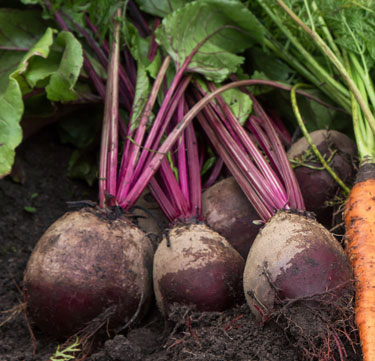
Beetroot
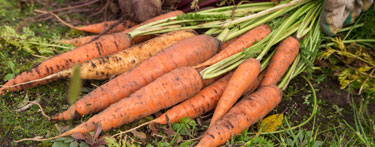
Carrots

Parsnips
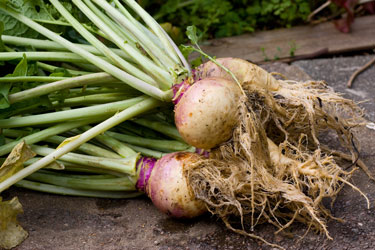
Turnips
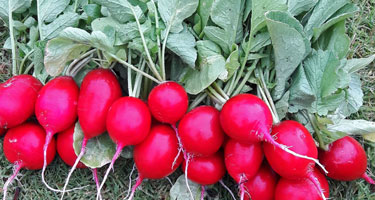
Radishes
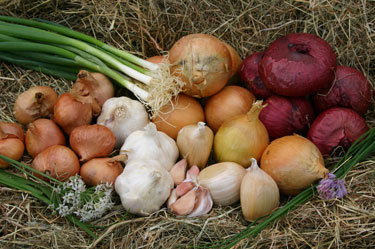
Onion family
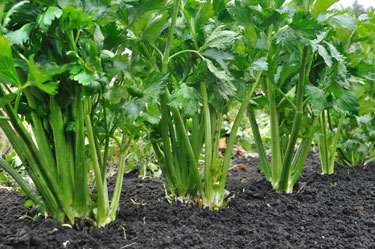
Celery-stems can be picked as needed
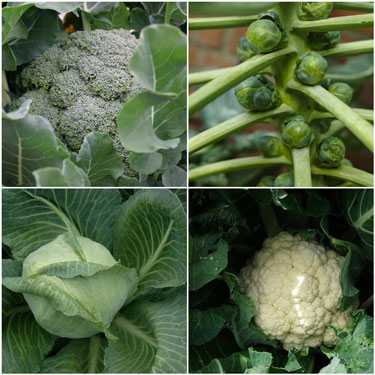
Brassica family-broccoli, Brussels sprouts, cauliflower, cabbage

